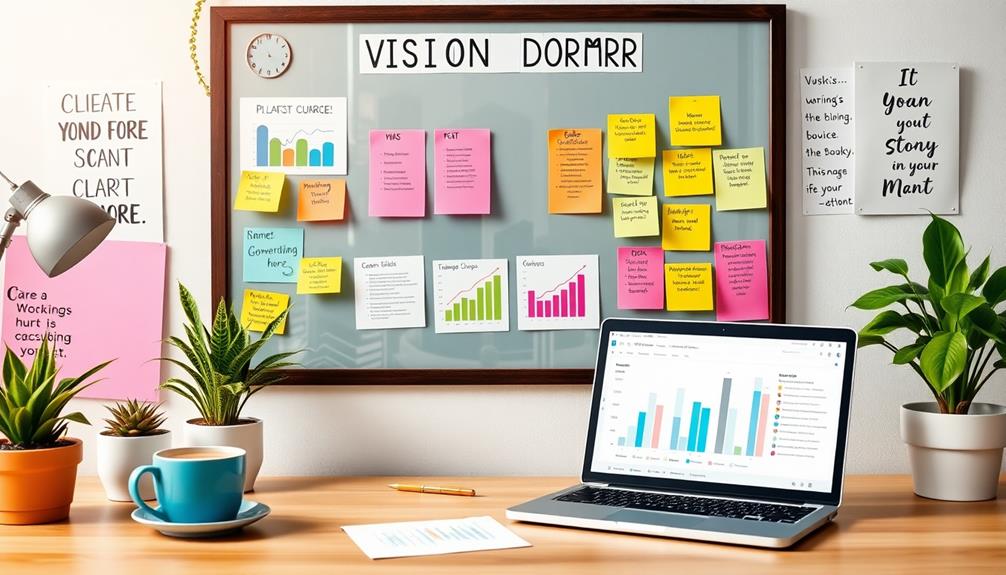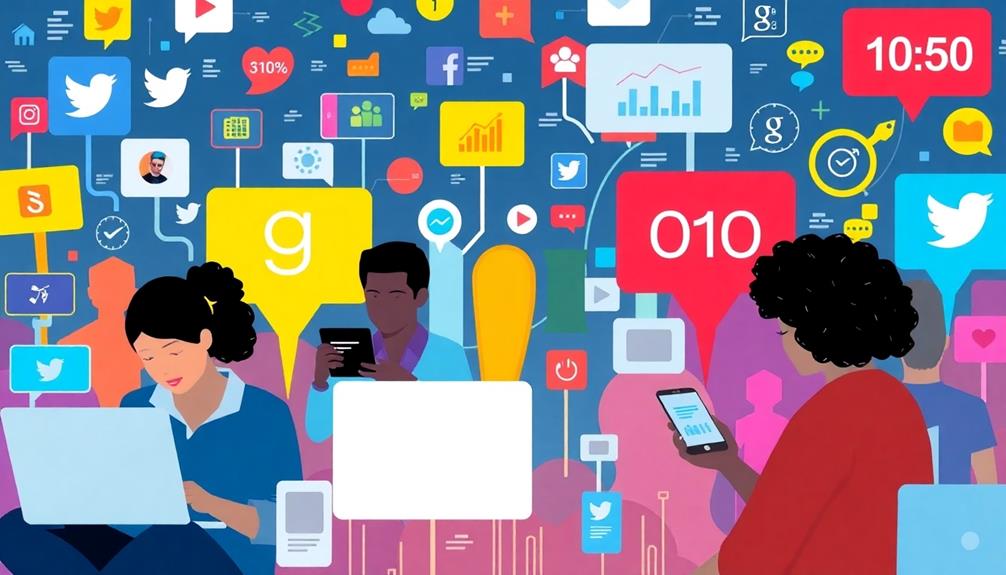To create polls and surveys that boost engagement, start with intriguing questions that capture attention. Use multiple-choice and open-ended formats to simplify responses and gather detailed feedback. Keep your language clear and limit questions to under ten to prevent fatigue. Personalize your invitations to increase response rates and share your results openly to foster trust. Choose user-friendly tools like Outgrow for ease of creation, ensuring your polls are mobile-friendly and visually appealing. By implementing these strategies, you'll not only engage your audience but also gain valuable insights that can inform your next steps. There's even more to discover on this topic.
Key Takeaways
- Craft intriguing and concise questions to capture audience attention and encourage participation.
- Use multiple-choice formats for easier decision-making and include open-ended questions for valuable insights.
- Personalize survey invitations to increase participation rates and post them during peak visibility hours.
- Limit surveys to essential questions, ideally under 10, to prevent participant fatigue.
- Share survey results transparently to build trust and encourage future engagement from respondents.
Importance of Polls and Surveys

In today's digital landscape, polls and surveys are essential tools for enhancing audience engagement. By inviting participation, you create an interactive space for your audience, fostering community around your brand. These tools provide valuable insights into your target market's preferences, enabling you to make data-driven decisions that align with customer needs and interests.
Additionally, implementing effective online reputation management strategies can also amplify the impact of your engagement efforts, as it helps improve brand perception among your audience.
Utilizing polls can also facilitate quick A/B testing. You can gauge responses to new ideas or products in real-time, saving resources while you explore what resonates most with your audience. Moreover, embedding surveys in newsletters can greatly boost response rates, often increasing engagement 2-3 times compared to traditional formats.
Engaging in two-way communication through polls and surveys fosters a sense of validation for respondents. When people feel their opinions matter, it enhances customer satisfaction and loyalty.
Ultimately, polls and surveys aren't just about collecting data; they're about building relationships and ensuring your audience feels valued. By prioritizing these tools, you're taking important steps toward a deeper connection with your audience, leading to more informed strategies and successful outcomes for your business.
Designing Engaging Questions
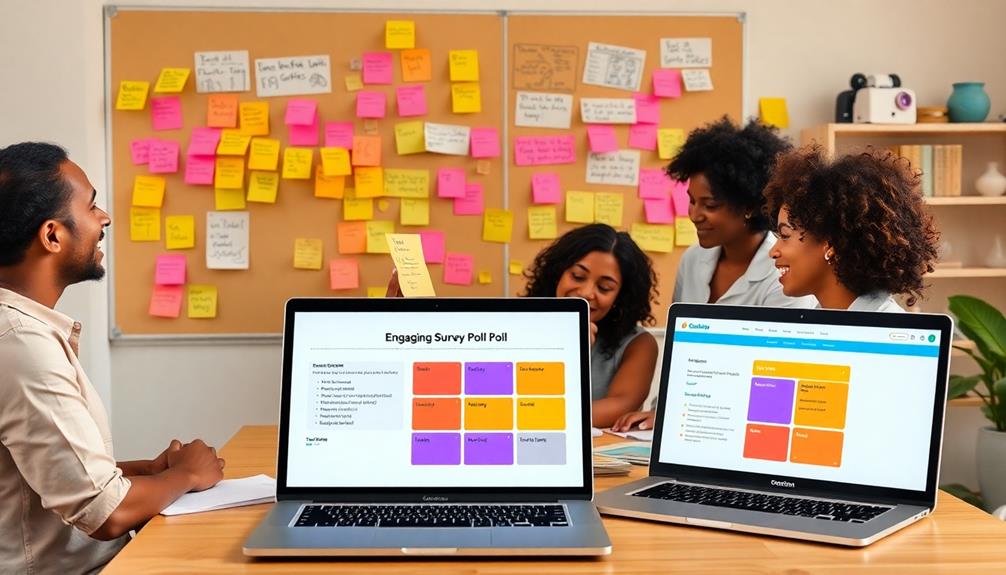
Crafting engaging questions is essential for capturing your audience's attention and ensuring higher response rates. Start with intriguing questions that immediately pique interest—this can greatly boost engagement. Utilize multiple-choice formats, as they simplify decision-making for respondents and often lead to higher completion rates.
Additionally, consider the importance of actionable tips and strategies when designing your questions, as these can provide readers with a practical context that enhances their willingness to participate.
Incorporate a mix of open-ended questions to encourage detailed feedback while keeping the survey dynamic and engaging. This variety helps maintain participant interest and offers richer insights. Remember to keep your questions easy to read; aim for clarity by limiting sentence length to 15-20 words. This practice not only enhances understanding but also reduces the risk of misinterpretation.
Consider adding gamification elements, like progress bars or interactive visuals, to make the survey experience more enjoyable. These features can motivate participants to complete the survey while maintaining their engagement throughout.
Best Practices for Implementation
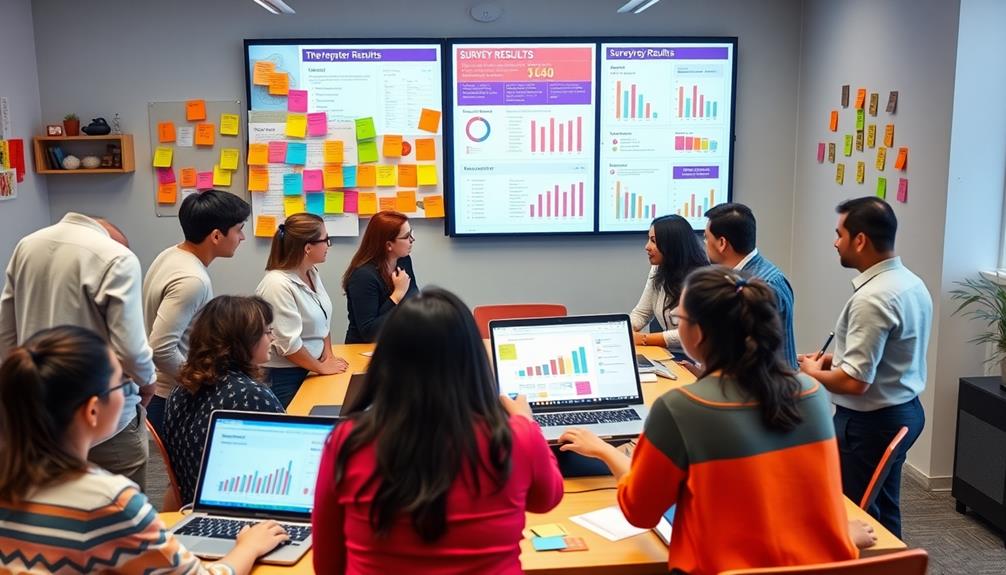
To effectively implement polls and surveys, you need to focus on clarity and engagement from the start. Use clear, concise language and engaging visuals to capture attention.
Studies show that simpler formats yield higher completion rates, so make surveys more engaging by limiting questions to essential ones—ideally under 10—to avoid survey fatigue. Additionally, incorporating free SEO keywords can help you reach a broader audience and enhance participation.
Personalize your invitations by including participants' names and explaining how their feedback will be used. This personal touch can increase participation rates by up to 22%.
Timing also matters; consider posting your online surveys early in the morning to maximize visibility and engagement.
When crafting your questions, make sure they allow for multiple options, making it easier for participants to respond. This approach not only improves the quality of responses but also makes surveys that feel more accessible.
Lastly, always share results transparently with participants. This practice promotes further engagement, as people feel more connected and valued within your community.
Analyzing Survey Results

Analyzing survey results reveals valuable insights that can shape your understanding of audience preferences and behaviors. Start by identifying trends and patterns in the responses, which will help you pinpoint what resonates with your survey population.
Segmenting data based on demographics provides a deeper analysis, allowing you to tailor your strategies for specific groups. Utilizing AI tools for content optimization can also enhance your ability to analyze survey data effectively.
Utilizing data visualization techniques enhances the clarity of your findings, making it easier for stakeholders to grasp key insights at a glance. Charts, graphs, and infographics can transform complex data into digestible visuals that speak volumes.
Furthermore, comparing current survey results with past data is essential. This approach helps you track progress and assess the effectiveness of any changes implemented based on previous feedback. By identifying improvements or setbacks, you can refine your engagement strategies accordingly.
Lastly, don't forget to share key findings transparently with participants. This fosters trust and encourages future engagement, as respondents see how their input leads to tangible outcomes.
Tools for Creating Polls
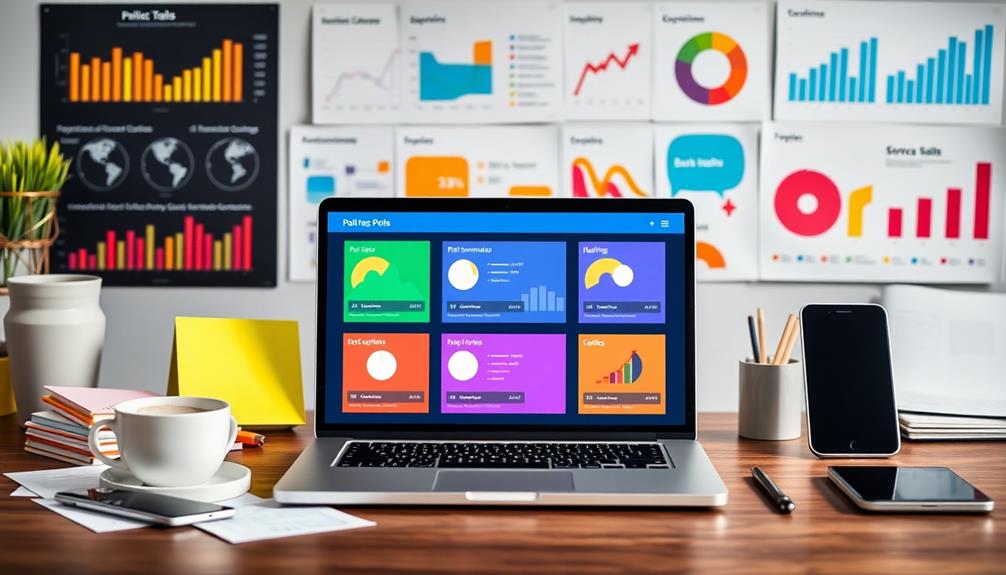
Creating engaging polls is easier than ever with a variety of user-friendly tools at your disposal. Platforms like Outgrow offer intuitive drag-and-drop interfaces, allowing you to create polls and surveys without any coding knowledge. This means you can focus on crafting great questions rather than getting bogged down by technical details.
Understanding your audience's preferences can be beneficial, much like knowing your credit score when planning a financial strategy.
Many of these tools provide pre-made templates tailored to different industries, streamlining the setup process. You can choose from various question types, including multiple-choice and open-ended options, which enhances engagement by catering to diverse respondent preferences.
Mobile-friendly designs are essential for ensuring that your polls are accessible on smartphones and tablets. This accessibility maximizes participation, as users can easily respond wherever they are.
Plus, integration capabilities with email marketing tools and social media platforms allow you to seamlessly share and embed your polls, greatly increasing visibility.
Frequently Asked Questions
How Do Polls Increase Engagement?
Polls increase engagement by inviting quick responses, making participation easy and fun. They foster a sense of community and validate opinions, encouraging people to share and discuss their views, which amplifies interaction and connection.
How to Make a Survey More Engaging?
To make your survey more engaging, start with fun questions, mix question types, and use appealing visuals. Keep it concise, under ten minutes, and clearly explain how you'll use the feedback to value respondents' input.
How Do You Write an Engaging Poll?
To write an engaging poll, start with clear, relevant questions. Limit options to 2-5 choices, use appealing visuals, and incorporate trending themes. Sharing results afterward builds community and encourages participants to stay involved.
Which Tool Is Best to Create Polls Surveys and Quizzes?
When choosing a tool for polls, surveys, and quizzes, consider user-friendly options like SurveyMonkey or Google Forms. They offer diverse question formats and real-time analytics, making your engagement efforts simple and effective.
Conclusion
Creating polls and surveys isn't just another task; it's a powerful way to engage your audience. You might think they take too much time, but in reality, they can be quick, fun, and informative. By asking the right questions, you'll not only gather valuable insights but also show your audience you value their opinions. So, go ahead and start crafting your polls today—you'll be surprised at how much more connected you feel to your community!



